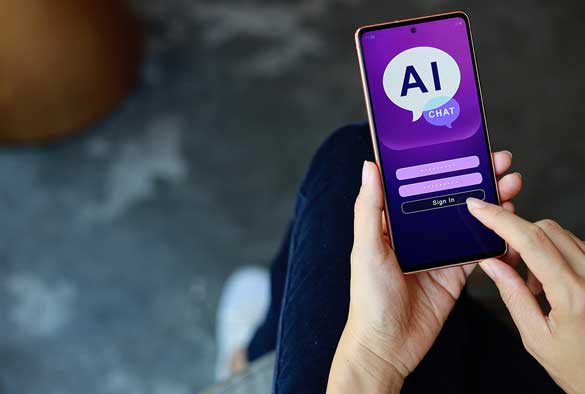Bringing AI to campus: Developing a chatbot for the University of Liverpool
Posted on: 26 March 2025 in Innovation

We spoke to Steven Gow, our Digital Solutions team leader, about chatbots and how they can help us at the University.
Artificial Intelligence (AI) is a big topic across the University, with many people keen to explore its potential but unsure where to start. Here in IT Services, we’re taking a hands-on approach - testing useful applications, developing secure solutions, and creating proof-of-concept (PoC) projects to help our University community engage with AI in a way that works for them.
One of the most exciting developments we’re currently working on is our in-house chatbot, designed specifically to support students and staff by making it easier to find key University information.
What is a chatbot?
A chatbot is a type of artificial intelligence (AI) that can simulate human conversation, allowing users to ask questions and receive instant responses. Chatbots are commonly used to provide customer support, answer FAQs, and assist with tasks like booking appointments or finding information.
Why build our own chatbot?
The University holds a vast amount of information, but it isn’t always easy to access it all in one place. Students and staff often need to search across multiple systems and websites to find what they need, and a chatbot was an obvious solution to centralise this data.
We explored third party chatbot solutions, but these products typically rely on data scraping and external processing, raising concerns about security and data integrity.
We knew that if we wanted a chatbot that worked safely and effectively for our community, we had to build it ourselves.
Who is building the chatbot?
Our Digital Solutions team, part of Digital Innovation and Application Development, has been leading the project.
The Digital Solutions team focuses on researching and bringing new technologies into the University. As well as the chatbot they are also providing Robotic Process Automation (RPA) to assist staff in their everyday work as well as Virtual Reality PoCs.
What can the chatbot do?
We are working with various areas of the business to see where the new AI chatbot service can bring value to their customers - these initial areas include the My Liverpool student portal, Confirmation & Clearing and Centre of Innovation in Education (CIE) websites.
Unlike widely available AI tools such as Microsoft Copilot or ChatGPT, our chatbot will only provide information based on the data it has been given. It won’t generate new theories, form opinions, or answer questions outside its designated knowledge base. If a user asks something beyond its scope, it will clarify that it is a University chatbot and can only respond to University related queries.
Once uploaded, data will be available in real time through the chatbot, ensuring staff and students always have access to the most up-to-date information.
What’s next?
The chatbot is only as good as the information it has access to, and we’re going to work with teams across the University to ensure their department, service, or project information is included. More details on how to get involved will be available soon.
Our Digital Solutions team is already exploring future developments, including the ability for students to ask the chatbot about personalised information such as their timetables and academic records. These enhancements will be powered by internal Application Programming Interfaces (APIs), ensuring sensitive data remains secure.
Of course, AI raises important ethical considerations, and we are working closely with colleagues across the University to ensure it is deployed responsibly. The balance between automation and human oversight is crucial, and our goal is to use AI to assist staff, freeing them up to focus on the work that matters most.
Stay up to date with the latest chatbot developments by following IT Services on Instagram and LinkedIn, or sign up for our newsletter, YOUR I.T. Insight.
Keywords: innovation, chatbots, artificial intelligence, AI, development, app.